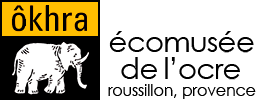Gouache & watercolour paint
Designation
Gum arabic, gum Senegal.
Chemical composition
Gum arabic is produced by the exudation of acacia stalks. Like all gums, it is a highly branched polysaccharide macromolecule. Like many substances of biological origin, it should come as no surprise that it contains mineral products and nitrogenous constituents. It is soluble in water and insoluble in alcohol.
Historical origins and first uses
Gum Arabic is certainly the oldest and best-known of all gums. The Egyptians knew it as kami and used it as early as the third dynasty (2650 BC) to ensure the cohesion of mummy bandages. This gum could also have been used to fix the pigments in hieroglyphic paintings. Without going back that far, we can safely say that gum arabic has been known since the beginning of the historical era.
Manufacturing
Nearly 900 species of acacia can be used to produce gum arabic, mainly in the world’s tropical belt. The largest production was very quickly concentrated in Africa, giving it its other name of Senegal gum, a secretion of various acacias (leguminous plants). 80% of production comes from Acacia Senegal (in Sudan), with the remainder divided equally between Acacia laetia and Acacia seyal. The gum flows naturally through wounds in the bark of the trees; by increasing the number of these wounds through human intervention, the yield can easily be increased. However, production can vary greatly depending on the tree, from 20g to 2000g per individual, with an average of 250g per tree.
Main qualities
Compared with other gums, gum arabic has a particularly high solubility in water, of up to 50%.
Use
Well-known for gluing labels, envelopes and stamps, gum arabic is now used for many other purposes, including food. In paints, all classic gouaches and watercolours are bound with a highly concentrated aqueous solution of gum arabic. It is also the best fixative for fat or thin pastels.
Other special features
Gum Arabic is incompatible with alcohol, mineral acids, ferric salts, oxalic acids and lead salts. Without a preservative, a gum arabic solution will rot. For a long time, phenol was used as an antiseptic agent; today, several solutions have been proposed in accordance with regulations. The antiseptics used in gouaches must comply with toy legislation.
Recipe for gum arabic solution
Allow the gum powder to swell in 2 to 3 volumes of demineralised water (24 to 48 hours in cold water, quicker in lukewarm water).
Filter the syrupy liquid through a fine cloth to remove impurities.
Add a few drops of preservative (essential oil of clove, lavender or thyme).
To make the film less brittle, you can add a plasticiser such as glycerine when preparing the binder (1g of glycerine for 40g of gum water).
You can add a little honey to this watercolour binder preparation, which will serve as a grinding binder for the pigments and the preparation of the watercolour or gouache (with a higher pigment and/or filler content).
Example of a watercolour binder recipe:
135g clear gum arabic, 60g liquid acacia honey, 20g vegetable glycerine (available from chemists), 200g distilled water.
Recommended Book
Peindre à l’eau comme les maîtres de Claude Yvel, Edisud
Manières de peindre de Jean-Pierre Brazs, Editions Notari
Ocres et terres secrets d’atelier, éditions Edisud.
